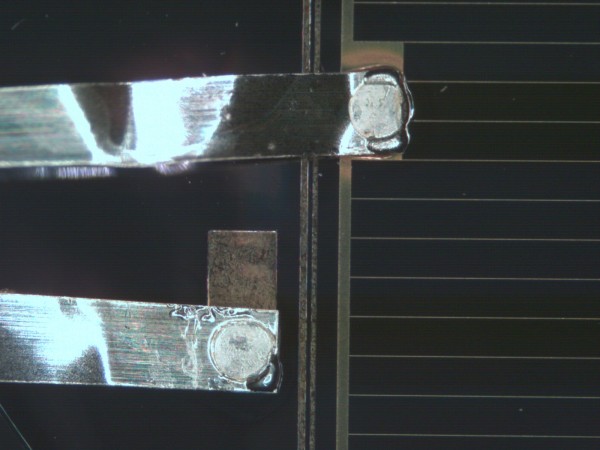
Ultrasonic soldering a variant of traditional iron soldering, where instead of requiring a flux to chemically reduce the metals’ surface oxides, the ultrasonic vibration from the soldering iron produces cavitation bubbles in the liquid solder. When the cavitation bubbles collapse, the mechanical motion of the collapse abrasively removes the surface oxides from the metal to be soldered. Once this occurs, the liquid solder can bond to the metal substrate. In both cases, the soldering iron tips are heated and keep the solder liquid or molten on the tip.
What happens to the surface oxide? Being an oxide, it is usually lighter than the liquid metal solder, and floats to the surface. This gives an ultrasonically-soldered joint more of a mottled or matte finish. However, the shear strengths of the joints are the same as a joint with the same alloy, soldered with flux.
Advantages of ultrasonic soldering include the cost savings in flux and post-solder flux removal operations, no fumes, and the ability to solder to difficult-to-wet metals. This last advantage provides design engineers with many more options for electronic components. Most metals need to be plated with nickel, tin, or both to provide a “solderable” surface. Metal plating is not a “green” process and is often a source of quality issues downstream in the manufacturing plant.
Ultrasonic soldering provides the ability to join most any metal to any other metal, such as a tungsten wire to a stainless steel leadframe, or a copper wire to a nickel tab. Joints will be limited in operating temperature based on the particular solder used. However, all solders can be used with ultrasonic soldering, including lead-free and zinc-based solders.
This is a photo of a 0.025” wide, 0.001” thick silver ribbon bonded to a polyimide-backed device. The ribbons were soldered to gold pads on the plastic substrate, without overheating the plastic. Additionally, due to the application, flux residue was not allowed. Therefore ultrasonic soldering with a tin-silver alloy was a great solution to join the leads to the device.
This article explained some benefits of ultrasonic soldering, along with a simple application example. For more information on how the process works, or how it might be applied to your difficult-to-solder materials, please contact me.
